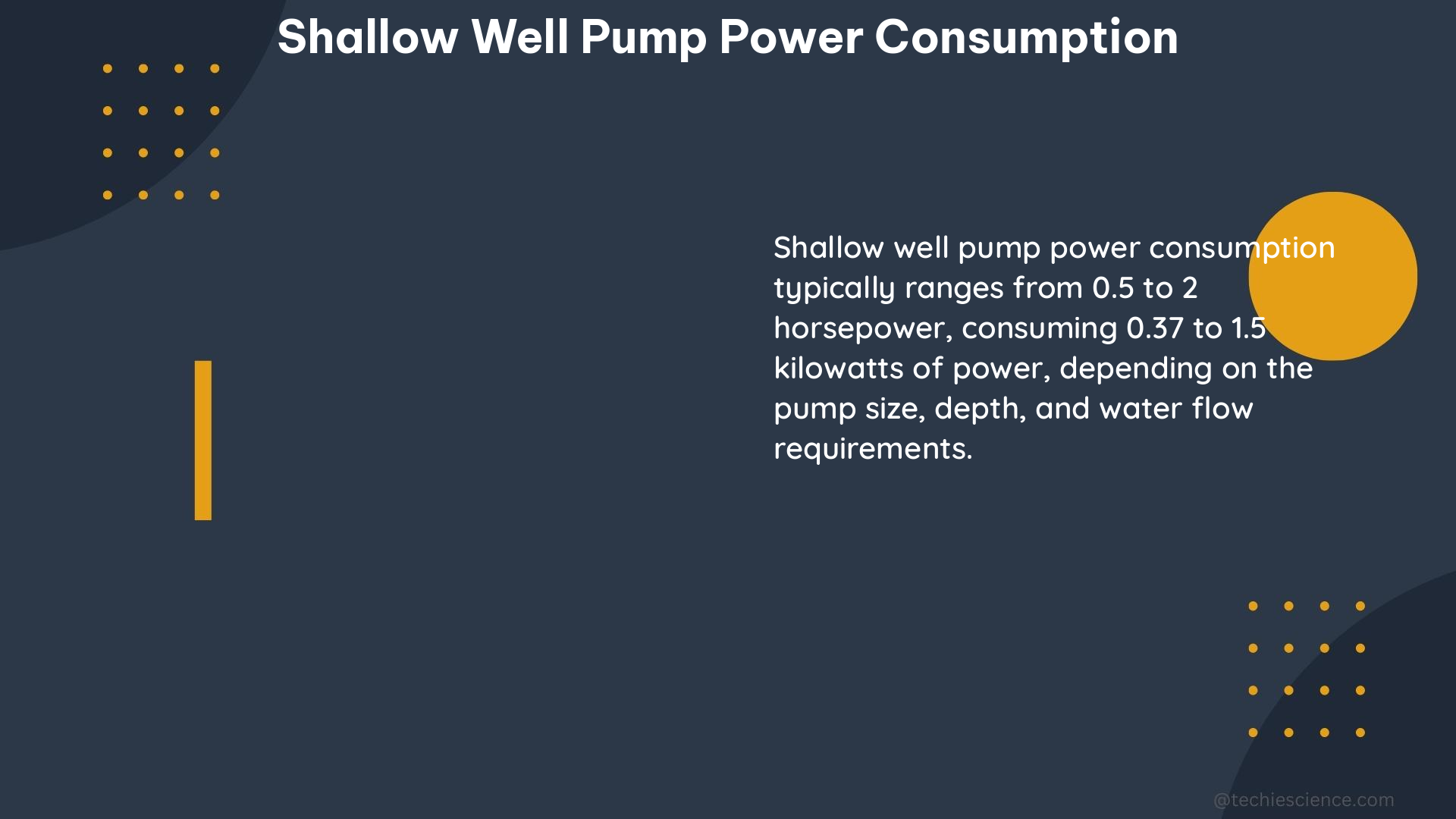Shallow well pumps are a crucial component in many residential and agricultural water supply systems, providing a reliable source of water from shallow groundwater sources. However, understanding the power consumption of these pumps is essential for selecting the right power source, whether it’s a solar panel system, a generator, or a grid-connected electrical system. In this comprehensive guide, we’ll dive deep into the technical details of shallow well pump power consumption, equipping you with the knowledge to make informed decisions.
Understanding Shallow Well Pump Power Requirements
Shallow well pumps typically consume between 500 to 2500 watts, depending on the pump’s horsepower and the depth of the well. For instance, a shallow well pump with a 1.5 horsepower rating may require around 1500 watts to operate. The power consumption of a well pump can vary based on several factors, including:
- Horsepower: Well pumps come in a range of motor sizes, from as low as 0.33 horsepower (750-800 running watts) to as high as 10 horsepower (15,000-16,000 running watts).
- Well Depth: The deeper the well, the more power the pump will require to lift the water to the surface.
- Motor Efficiency: More efficient motors will consume less power to achieve the same output.
- Frequency of Use: Pumps that run more frequently will consume more power over time.
- Power Source: The type of power source, such as solar, generator, or grid-connected electricity, can affect the overall power consumption.
Calculating Shallow Well Pump Power Consumption

To calculate the power consumption of a shallow well pump, you can use the formula:
Power (W) = Voltage (V) x Current (A)
For example, a 1-horsepower (HP) pump typically requires around 750 watts of power. You can use this formula to estimate the power consumption of your specific pump:
- Determine the voltage of your pump, which is usually 240V for residential and agricultural applications.
- Measure the current (in amps) drawn by the pump during operation.
- Plug the values into the formula to calculate the power consumption in watts.
It’s important to note that the actual power consumption may vary slightly due to factors such as motor efficiency and load conditions.
Monitoring Shallow Well Pump Energy Consumption
To monitor the energy consumption of your shallow well pumping system, you can install an electric meter ahead of the main line that supplies electricity to the system. This will allow you to track the power used by all the electric components, including the pump motor, controls, and valves. By monitoring the power consumption over time, you can:
- Identify periods of high or low energy usage.
- Compare the energy consumption of similar pumping systems to determine which ones are more efficient.
- Detect any anomalies or issues that may be causing excessive power consumption.
Powering Shallow Well Pumps with Solar Generators
Solar power generators are an excellent choice for powering shallow well pumps, especially in off-grid or remote locations. These systems offer several advantages, including:
- Cost-Effectiveness: Solar generators have no fuel costs, making them a cost-effective solution in the long run.
- Off-Grid Capability: Solar generators can operate independently of the electrical grid, making them ideal for remote or rural areas.
- Renewable Energy: Solar power is a clean, renewable energy source, reducing the environmental impact of your water pumping system.
When selecting a solar generator for your shallow well pump, it’s crucial to consider the wattage requirements of the pump and the available sunlight in your location. Consult with a solar power expert to ensure you choose the right size solar generator to meet your needs.
Conclusion
Shallow well pumps can consume a significant amount of power, and understanding their power requirements is essential for selecting the appropriate power source. By considering factors such as horsepower, well depth, motor efficiency, and frequency of use, you can accurately calculate the power consumption of your shallow well pump and choose the right solar generator or other power source to meet your needs. By monitoring energy consumption and optimizing your pumping system, you can achieve cost savings and efficient operation.
References:
– Terry Love Plumbing & Remodel DIY & Professional Forum
– How Many Watts Does a Well Pump Use? | EcoFlow
– How Many Watts Does a Well Pump Use? | Jackery
– How Many Watts Does a Well Pump Use? Ask an Engineer | RPS Solar Pumps
– Pump Pros Know How to Measure Energy Consumption | Pumps.org

The lambdageeks.com Core SME Team is a group of experienced subject matter experts from diverse scientific and technical fields including Physics, Chemistry, Technology,Electronics & Electrical Engineering, Automotive, Mechanical Engineering. Our team collaborates to create high-quality, well-researched articles on a wide range of science and technology topics for the lambdageeks.com website.
All Our Senior SME are having more than 7 Years of experience in the respective fields . They are either Working Industry Professionals or assocaited With different Universities. Refer Our Authors Page to get to know About our Core SMEs.